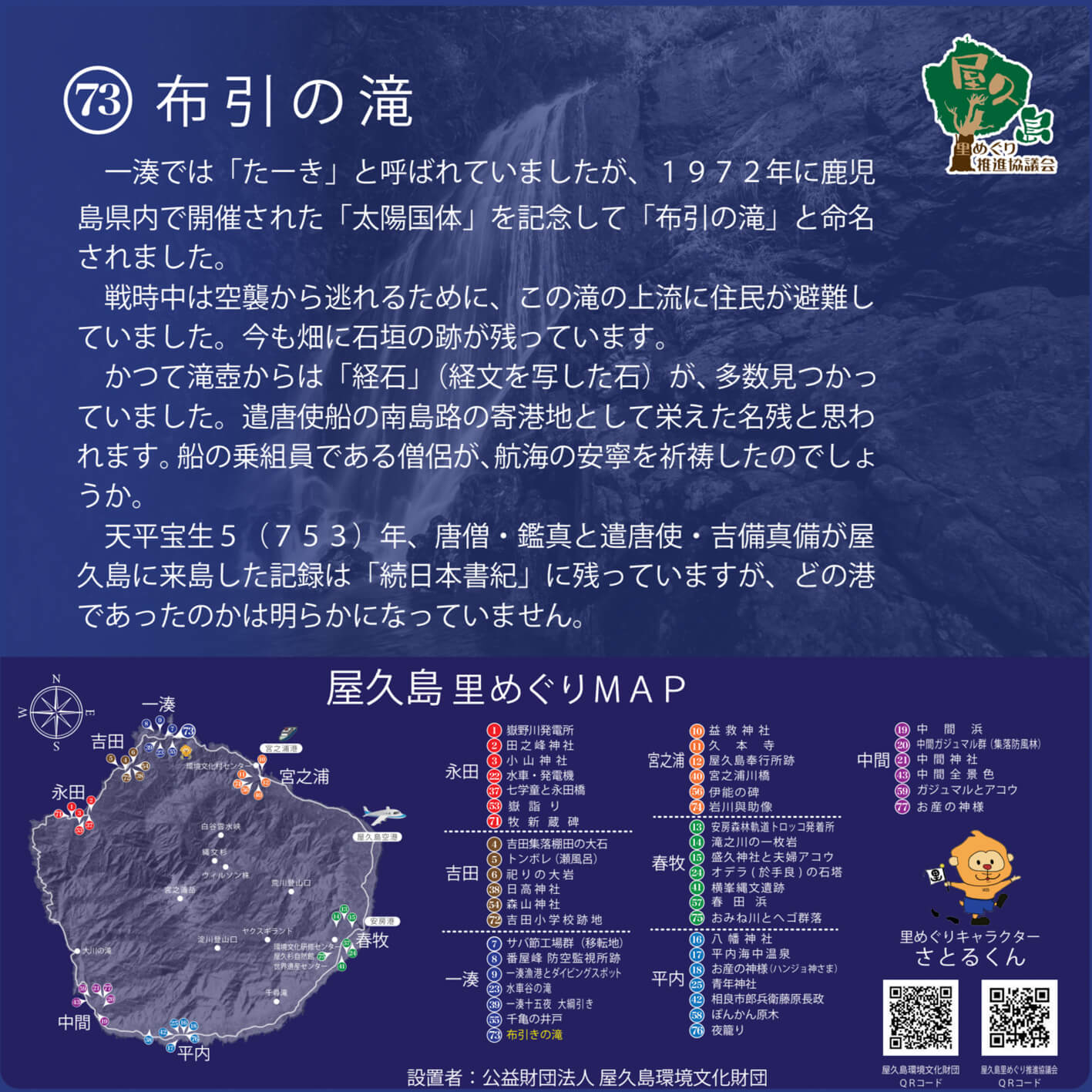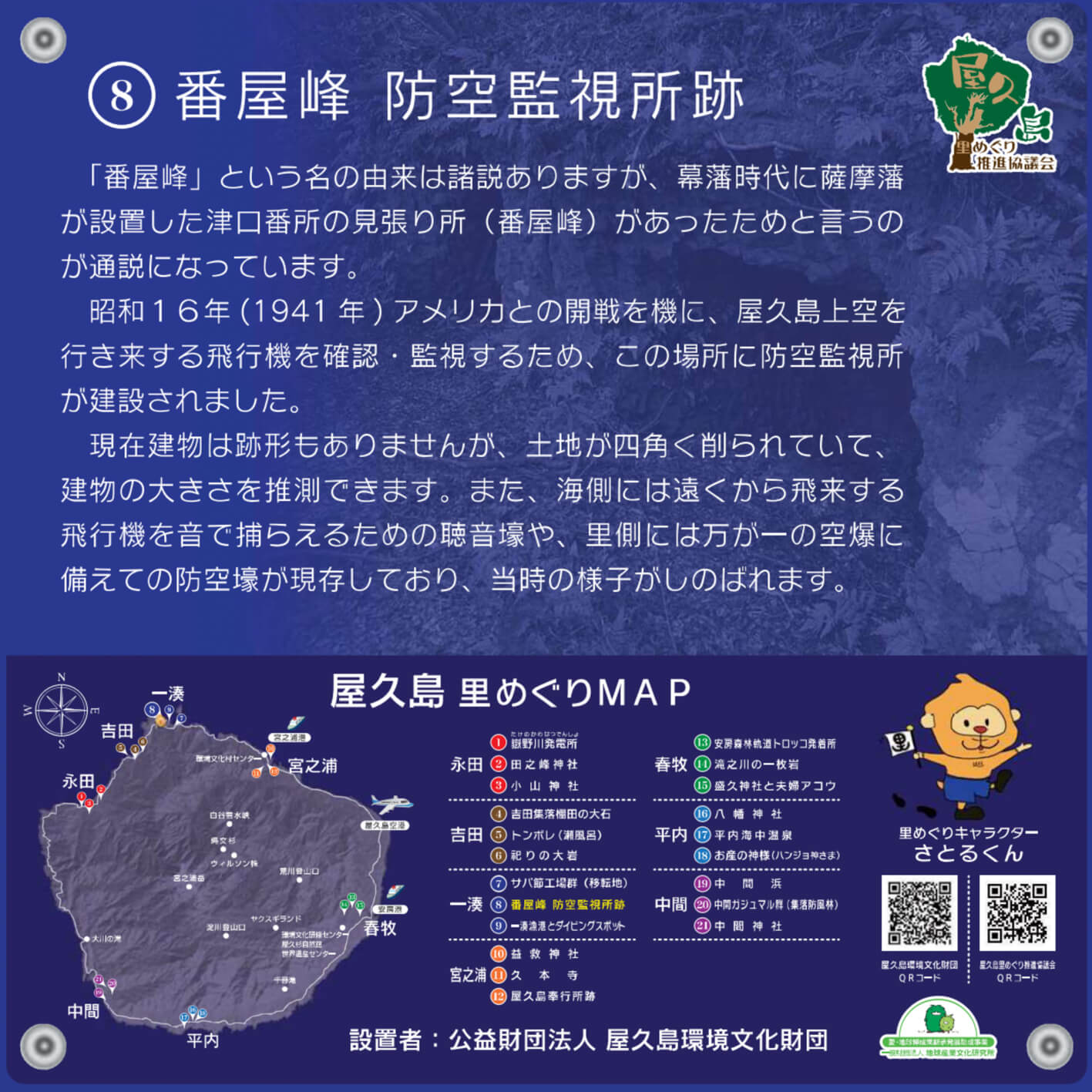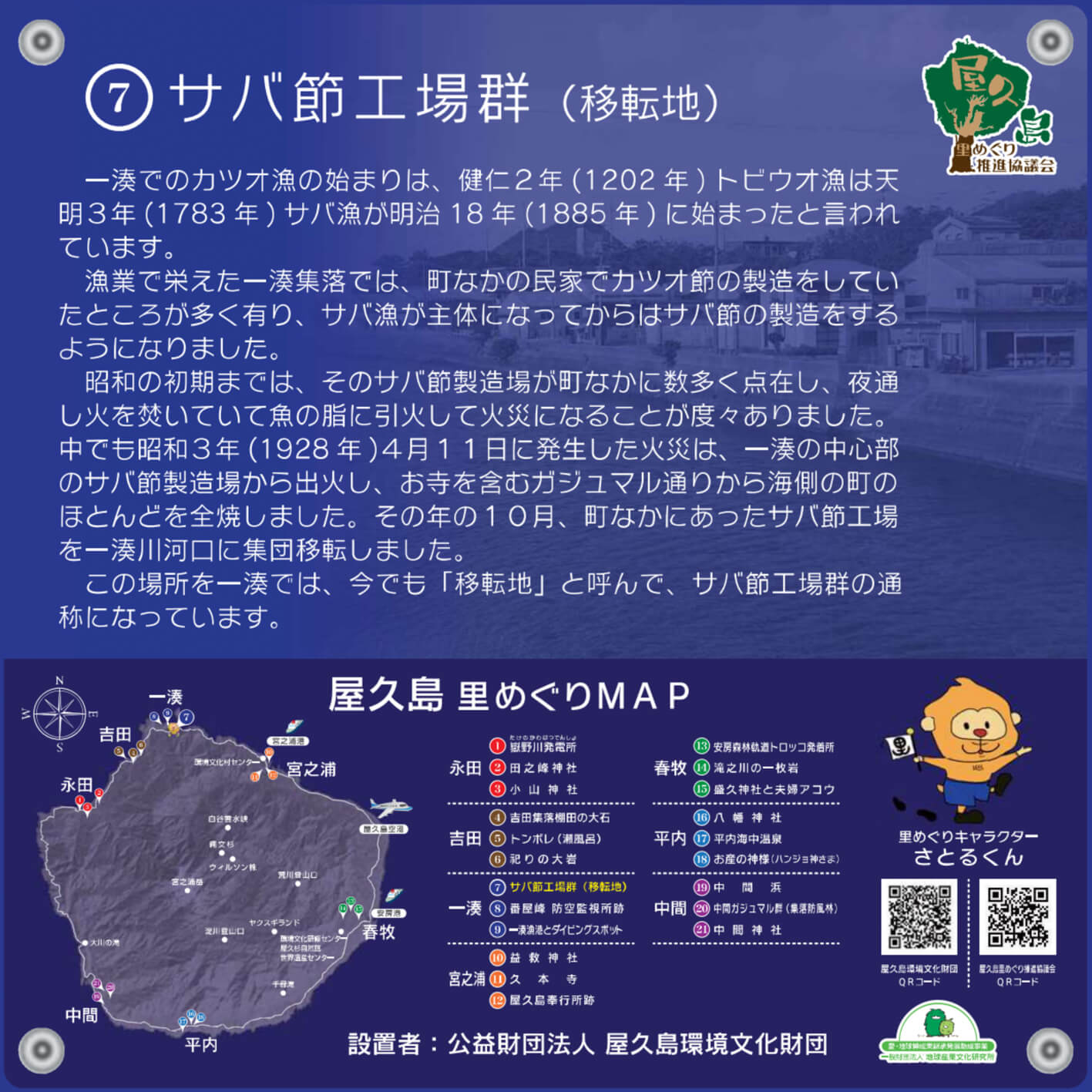issou
Nunobiki no Taki (Stretched Cloth Falls)
- Modification: 2024/01/11
- Area: issou
Locally, this waterfall had long been known simply as Taaaki. However, to commemorate the Taiyou Kokutai of 1972 (the 27th National Sports Festival, which was held in Kagoshima City), this waterfall was renamed Nunobiki no Taki.
During WWII, residents of Issou evacuated to the upper reaches of this waterfall as a precaution against air raids. To this day, bits of the stone walls that enclosed wartime crop fields and gardens can still be seen in the area.
Kyouseki, or stones engraved with Buddhist sutras, have been found in the plunge basin of this waterfall. It is thought that they are remnants of the days when Yakushima was used as a southern port of call for the Japanese envoy to the Tang Dynasty of China, from 618–907 CE. Perhaps the Buddhist priest among the ship’s crew used them in his prayers for safe passage across the waters.
A 753 (Tenpyō-hōsei 5) visit to Yakushima by Kanjin, a Tang Dynasty monk of the Risshū school of Buddhism, and Kibi no Makibi, the then–Japanese envoy to China, is recorded in Shoku Nihongi (“Chronicle of Japan”), an imperially-commissioned historical text completed in 797. However, at which of Yakushima’s ports precisely this visit took place remains unknown.

Sengame’s Well
- Modification: 2024/01/11
- Area: issou
It is said that Koreeda Sengame (1821–1881) discovered this natural spring. Lady Sengame, who was originally a religious leader from Komatsubara in Kagoshima City, came to live on Yakushima with her family in 1868 (Meiji 1), eventually settling in Issou.
In her later years, Lady Sengame was very active in proselytizing for the Jōdo Shinshū sect of Pure Land Buddhism, and in fact kicked the bucket in Nagata village one day whilst spreading the gospel, so to speak.
It is said that Lady Sengame also had particular talent as a human dowsing rod. Besides Sengame’s Well, she also discovered the Cold Spring of Ōura, another natural wellspring in Issou.

Suishantan no Taki (Waterwheel Valley Falls)
- Modification: 2024/01/11
- Area: issou
The name of this waterfall, which is part of the small Tenōto River (“Metropol Eaves of the Hand” River) is thought to have come from a small watermill that was once situated on its left banks and used in the production of incense here pre-WWII.
Until about 1946 (Shōwa 21), this watermill was used to power more than five wooden mechanical mortars and pestles, which crushed the dried leaves and bark of the santabu tree (an endemic species of laurel) into powder. This powder was then packaged into bags of about 20kg each, then sent to Fukuoka where they were made into incense.
This waterfall flows year-round with water, and has been used and loved as a resting spot for the youths of Issou Junior High School—which was founded in 1949 (Shōwa 24), but now stands empty following the 2010 consolidation of the junior high schools of Yakushima’s northern villages into Miyanoura’s Chuo Junior High School.

Banyamine Air Defense Lookout
- Modification: 2024/01/11
- Area: issou
There are many theories as to the origins of the name Banyamine. The most widely accepted of those states that in the feudal age of Japan, the Satsuma Domain (which comprised most of what is now present-day Kagoshima Prefecture, centered on the Satsuma Peninsula) had a tsunami lookout called such as this site.
At the onset of America and Japan’s wartime involvement in 1941 (Shōwa 16), an air defense lookout was built here in order to monitor the comings and goings of aircraft in the vicinity.
While there is nothing left of the actual building, a square impression remains visible in the ground, thus giving us an idea the size of the lookout. If you close your eyes, you can envision the tense, wartime atmosphere: listening with sharp ears for approaching aircraft by using an acoustic mirror, keeping watch for the worst-case scenario of an approaching bomber, etc… May peace prevail on this Earth.

Sababushi Factory Relocation (aka Itenchi)
- Modification: 2024/01/11
- Area: issou
In Issou, the fishing of katsuo (a term that refers to several species of bonito and skipjack tuna) began in 1202 (Kennin 12), that of tobiuo (flying fish) began in 1783 (Tenmei 3), and that of saba (mackerel) began in 1885 (Meiji 18).
Many inhabitants of Issou village prospered by making smoked katsuo (katsuobushi). Naturally, through time, the industry thus expanded into smoked mackerel (sababushi) territory.
Until the beginning of the Shōwa era (the 1920s), there were many sababushi factories in Issou. They’d often keep their smoke-fires burning through the night—which frequently resulted in fires breaking out in town. Amongst these disasters, one stands out: on April 11th of 1928 (Shōwa 3), a sababushi factory in the heart of Issou caught aflame. This particular fire resulted in most of the town between Gajumaru Street and the seaside—including the local Buddhist temple—to be burnt to the ground. From October of that year onwards, the remaining sababushi factories were consolidated into one factory situated at the mouth of Issou River.
To this day, that factory site is called Itenchi, or “relocation”. This term is also used generally to refer to the sababushi industry of Issou as a whole.

〒891-4205
鹿児島県熊毛郡屋久島町宮之浦823番地1
TEL:0997-42-2900
FAX:0997-49-1018
(屋久島環境文化村センター内)













